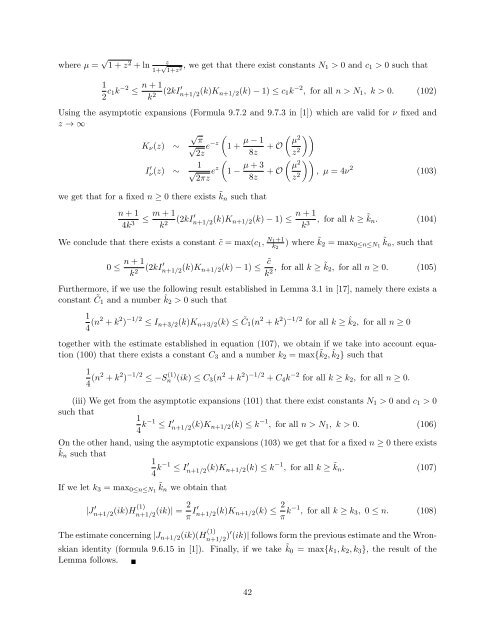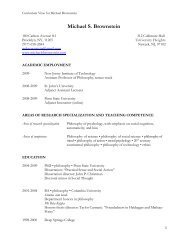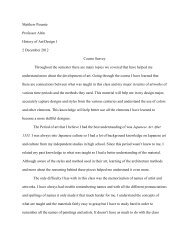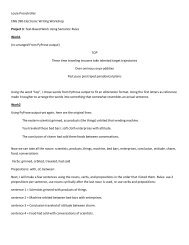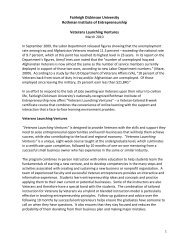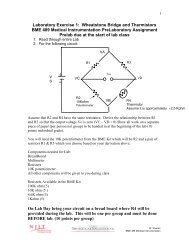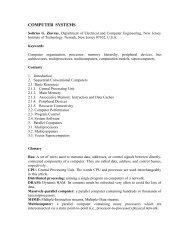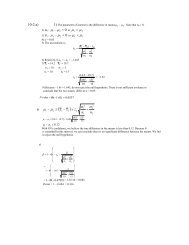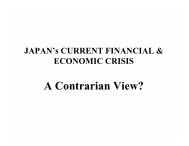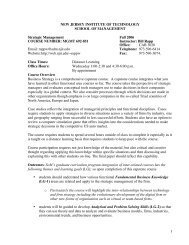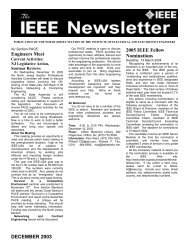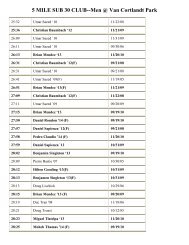Well-conditioned boundary integral formulations for the ... - Njit
Well-conditioned boundary integral formulations for the ... - Njit
Well-conditioned boundary integral formulations for the ... - Njit
You also want an ePaper? Increase the reach of your titles
YUMPU automatically turns print PDFs into web optimized ePapers that Google loves.
where µ = √ 1 + z 2 z<br />
+ ln<br />
1+ √ , we get that <strong>the</strong>re exist constants N 1+z 2 1 > 0 and c 1 > 0 such that<br />
1<br />
2 c 1k −2 ≤ n + 1<br />
k 2 (2kI<br />
n+1/2 ′ (k)K n+1/2(k) − 1) ≤ c 1 k −2 , <strong>for</strong> all n > N 1 , k > 0. (102)<br />
Using <strong>the</strong> asymptotic expansions (Formula 9.7.2 and 9.7.3 in [1]) which are valid <strong>for</strong> ν fixed and<br />
z → ∞<br />
√ ( π<br />
K ν (z) ∼ √ e −z 1 + µ − 1 ( )) µ<br />
2<br />
+ O<br />
2z 8z z 2<br />
(<br />
I ν(z)<br />
′ 1<br />
∼ √ e z 1 − µ + 3 ( )) µ<br />
2<br />
+ O<br />
2πz 8z z 2 , µ = 4ν 2 (103)<br />
we get that <strong>for</strong> a fixed n ≥ 0 <strong>the</strong>re exists ˜k n such that<br />
n + 1<br />
4k 3 ≤ m + 1<br />
k 2 (2kI ′ n+1/2 (k)K n+1/2(k) − 1) ≤ n + 1<br />
k 3 , <strong>for</strong> all k ≥ ˜k n . (104)<br />
We conclude that <strong>the</strong>re exists a constant ˜c = max(c 1 , N 1+1<br />
k 2<br />
) where ˜k 2 = max 0≤n≤N1 ˜kn , such that<br />
0 ≤ n + 1<br />
k 2 (2kI<br />
n+1/2 ′ (k)K n+1/2(k) − 1) ≤ ˜c<br />
k 2 , <strong>for</strong> all k ≥ ˜k 2 , <strong>for</strong> all n ≥ 0. (105)<br />
Fur<strong>the</strong>rmore, if we use <strong>the</strong> following result established in Lemma 3.1 in [17], namely <strong>the</strong>re exists a<br />
constant ˜C 1 and a number ˆk 2 > 0 such that<br />
1<br />
4 (n2 + k 2 ) −1/2 ≤ I n+3/2 (k)K n+3/2 (k) ≤ ˜C 1 (n 2 + k 2 ) −1/2 <strong>for</strong> all k ≥ ˆk 2 , <strong>for</strong> all n ≥ 0<br />
toge<strong>the</strong>r with <strong>the</strong> estimate established in equation (107), we obtain if we take into account equation<br />
(100) that <strong>the</strong>re exists a constant C 3 and a number k 2 = max{˜k 2 , ˆk 2 } such that<br />
1<br />
4 (n2 + k 2 ) −1/2 ≤ −S (1)<br />
n (ik) ≤ C 3 (n 2 + k 2 ) −1/2 + C 4 k −2 <strong>for</strong> all k ≥ k 2 , <strong>for</strong> all n ≥ 0.<br />
(iii) We get from <strong>the</strong> asymptotic expansions (101) that <strong>the</strong>re exist constants N 1 > 0 and c 1 > 0<br />
such that<br />
1<br />
4 k−1 ≤ I ′ n+1/2 (k)K n+1/2(k) ≤ k −1 , <strong>for</strong> all n > N 1 , k > 0. (106)<br />
On <strong>the</strong> o<strong>the</strong>r hand, using <strong>the</strong> asymptotic expansions (103) we get that <strong>for</strong> a fixed n ≥ 0 <strong>the</strong>re exists<br />
˜k n such that<br />
1<br />
4 k−1 ≤ I ′ n+1/2 (k)K n+1/2(k) ≤ k −1 , <strong>for</strong> all k ≥ ˜k n . (107)<br />
If we let k 3 = max 0≤n≤N1 ˜kn we obtain that<br />
|J ′ n+1/2 (ik)H(1) n+1/2 (ik)| = 2 π I′ n+1/2 (k)K n+1/2(k) ≤ 2 π k−1 , <strong>for</strong> all k ≥ k 3 , 0 ≤ n. (108)<br />
The estimate concerning |J n+1/2 (ik)(H (1)<br />
n+1/2 )′ (ik)| follows <strong>for</strong>m <strong>the</strong> previous estimate and <strong>the</strong> Wronskian<br />
identity (<strong>for</strong>mula 9.6.15 in [1]). Finally, if we take ˜k 0 = max{k 1 , k 2 , k 3 }, <strong>the</strong> result of <strong>the</strong><br />
Lemma follows. <br />
42


